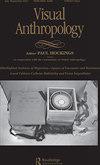马赛:回话
IF 0.3
Q3 ANTHROPOLOGY
引用次数: 1
摘要
关于马赛社区西方旅游的经济和社会现实的人类学研究越来越多,主要集中在文化遗产旅游上,在这种旅游中,游客被带到马赛村,在那里他们可以与当地人互动,观看文化表演,拍照,购买工艺品。旅游公司制作的广告通常以穿着传统服装的马赛男女的形象为特色,并向游客承诺冒险,热情好客,最重要的是真正的跨文化体验。现有的研究告诉我们很多关于东非旅游人类学的现实世界和理论问题,但它没有(也许不能)提供的是,当游客和马赛主人试图跨越人际鸿沟时,文化假设、期望和误解如何决定跨文化时刻的性质。研究人员不会读心术,因此跨文化交流的内在对话在很大程度上是不可观察和未知的,就像不断发生的主观共鸣一样,以及它如何继续影响每一个群体对另一个群体的看法。人类学家、电影制作人凡妮莎·维恩加登(Vanessa Wijngaarden)的新片《马赛人回话》(Maasai Speak Back)引人注目,挖掘了西方游客和马赛主人之间跨文化时刻的情感景观,并将之前无法观察到或不可知的东西展现了出来。在坦桑尼亚马赛社区的实地工作中,Wijngaarden拍摄了几组荷兰游客与当地马赛人的互动。这些游客被带到马赛人工作和生活的已建立的bomas,而不是专门设计的“文化”bomas,在那里他们被邀请观察人们的工作,互动,拍照和购买手工工艺品。正是在这里,当游客和主人协商买卖过程时,误解就显露出来了。马赛妇女的地位低于旅游公司、当地导游和翻译,她们希望得到一个公平的价格和一点利润。游客被困在旅游泡沫的轨道上,他们关心的是讨价还价。这种交流是紧张而不舒服的,西方人觉得他们被利用了,马赛人觉得他们的工作被贬低了。本文章由计算机程序翻译,如有差异,请以英文原文为准。
Maasai Speak Back
The growing body of anthropological research on the economic and social realities of Western tourism in Maasai communities focuses largely on cultural heritage tourism, in which visitors are taken to Maasai bomas where they can interact with local people, observe cultural performances, take photographs, and purchase crafts. The advertisements created by tour companies often feature quite dramatic images of Maasai men and women in full traditional dress, and promise tourists adventure, hospitality, and most importantly an authentic inter-cultural experience. The existing research tells us much about the real-world and theoretical issues of the anthropology of tourism in East Africa, but what it does not (and perhaps cannot) provide is a measure of how the cultural assumptions, expectations and misinterpretations of both tourists and Maasai hosts determine the nature of the cross-cultural moment as they attempt to reach across the interpersonal divide. Researchers are not mind-readers and therefore the inner dialog of the cross-cultural exchange is largely unobservable and unknown, as is the ongoing subjective resonance of the experience and how it continues to influence each group’s perception of the other. The anthropologist and filmmaker Vanessa Wijngaarden’s remarkable new film, Maasai Speak Back, mines the emotional landscape of the cross-cultural moment between Western tourists and Maasai hosts, and brings the previously unobservable or unknowable to the surface. During her fieldwork in Tanzanian Maasai communities, Wijngaarden filmed the interaction of several groups of Dutch tourists with local Maasai. These visitors were brought to established bomas where Maasai work and live, not to specially designed “cultural” bomas, places where they were invited to observe people at their work, interact, take photos and buy hand-made crafts. It is here that the misunderstandings unfold, as visitors and hosts negotiate the buying and selling process. The Maasai women, who are at the bottom of the hierarchy below the tour companies, the local guides and interpreters, hope for a fair price and a small profit. The visitors, trapped in the orbit of the tourist bubble, are concerned with bargaining a “good price.” This exchange is tense and uncomfortable, the Westerners feeling that they are being taken advantage of, the Maasai that their work is being devalued.
求助全文
通过发布文献求助,成功后即可免费获取论文全文。
去求助
来源期刊

Visual Anthropology
ANTHROPOLOGY-
CiteScore
1.00
自引率
50.00%
发文量
19
期刊介绍:
Visual Anthropology is a scholarly journal presenting original articles, commentary, discussions, film reviews, and book reviews on anthropological and ethnographic topics. The journal focuses on the study of human behavior through visual means. Experts in the field also examine visual symbolic forms from a cultural-historical framework and provide a cross-cultural study of art and artifacts. Visual Anthropology also promotes the study, use, and production of anthropological and ethnographic films, videos, and photographs for research and teaching.
 求助内容:
求助内容: 应助结果提醒方式:
应助结果提醒方式:


